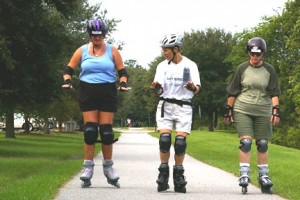Based on the article “Plumb Perfect,” written for the May/June 2004 edition of Yoga Journal by Roger Cole, PhD, a certified yoga instructor and research scientist.
I like to encourage skaters at all levels to practice one-foot balance poses to improve agility, coordination and confidence. Such practice also delivers better control over a constantly shifting center of gravity during the motions of skating so we can become more efficient with each stroke. This article discusses how alignment, strength and attention affect your balance practice.
